It's been a year and a few days since a spill at the Gold King Mine near Silverton released three million gallons of heavy-metal-laden, mustard yellow sludge into the Animas River.
Photos of the yellow water dominated headlines all over the world. Words like "disaster" and "catastrophic" were used. While the initial spill came as a shock to most, the river was able to withstand the blow. One year after the sludge came through, the river is back to it's usual state of water quality.
 There was no fish mortality documented from the spill, while bug sampling by an aquatic biologist with Mountain Studies Institute indicates a still thriving population of mayfly nymphs and caddis pupa. Colorado Parks and Wildlife (CPW) had installed pens of fingerling trout in the Animas before the plume arrived- and none of those fish died either. CPW ran an electro-shocking episode after the “Spill” with the usual re-capture protocol and got essentially the same results as the year before. Actually, the survey showed a slight improvement.
There was no fish mortality documented from the spill, while bug sampling by an aquatic biologist with Mountain Studies Institute indicates a still thriving population of mayfly nymphs and caddis pupa. Colorado Parks and Wildlife (CPW) had installed pens of fingerling trout in the Animas before the plume arrived- and none of those fish died either. CPW ran an electro-shocking episode after the “Spill” with the usual re-capture protocol and got essentially the same results as the year before. Actually, the survey showed a slight improvement.
"This is not to diminish our concern for the Animas River and the fishery in the canyon below Silverton. This reach has been substantially impacted by three draining mines at the headwaters of Cement Creek, which flows into the Animas at Silverton," said Buck Skillen, President of the 5 Rivers Chapter of TU. "This, plus the Gold King Spill, highlights the very need for Good Samaritan Legislation for which TU is strongly advocating – so that abandoned mine cleanup projects can proceed here and elsewhere."
 Getting the river back to it's usual state was no easy task but Trout Unlimited and partners were willing to take the lead. "It’s been quite a year since the Gold King spill sent a torrent of yellow, metal-laden mine water down the Animas River in SW Colorado," said Ty Churchwell, TU San Juan Mountains Coordinator. "But long before this unfortunate event, TU was deeply embedded in the water quality conversation – and now we’ve doubled down. Our efforts to pass Good Samaritan legislation are bearing fruit in the form of a bipartisan discussion draft now working its way through the halls of Congress. We hope to see the bill formally introduced this session."
Getting the river back to it's usual state was no easy task but Trout Unlimited and partners were willing to take the lead. "It’s been quite a year since the Gold King spill sent a torrent of yellow, metal-laden mine water down the Animas River in SW Colorado," said Ty Churchwell, TU San Juan Mountains Coordinator. "But long before this unfortunate event, TU was deeply embedded in the water quality conversation – and now we’ve doubled down. Our efforts to pass Good Samaritan legislation are bearing fruit in the form of a bipartisan discussion draft now working its way through the halls of Congress. We hope to see the bill formally introduced this session."
The 5 Rivers Chapter of Colorado TU worked with Mountain Studies Institute (MSI) in Durango by taking water samples every two hours from before the plume arrived until days later. They also monitored the macro-invertebrates in the river as the disaster unfolded. The year previously, 5 Rivers Chapter had worked with MSI to do a macro-invertebrates study that served as a baseline for clean-up efforts following the spill.
Also prior to the spill in August, Trout Unlimited teamed up with other partners to form the San Juan Clean Water Coalition. The intent when forming the coalition was to produce a site-specific Good Samaritan legislation for the San Juan Mountains of Colorado. In the wake of the spill, the intentions have broadened to use the Animas as an example for the potential issues in the West.
According to the Environmental Protection Agency, abandoned hard rock mines affect 40 percent of headwaters in the western United States. Just in the San Juan Mountains, slow acid drainage has led to the death of multiple rivers. "The community of Silverton, at the Animas’ headwaters, is now pursuing a Superfund listing to finally, once and for all, deal with the lingering problem of acid mine drainage (AMD) from dozens of old mining sites," said Churchwell. "The TU-led, San Juan Clean Water coalition, has grown dramatically and we’re making a real difference. In the wake of the spill, the coalition’s objectives have expanded to include a comprehensive, five-point plan to greatly improve the overall health of the watershed and the world class trout fishery in Durango"
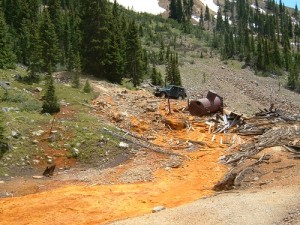 The Good Samaritan Legislation would address the current pollution clean-up laws in the United States. Currently, the Clean Water Act and the Comprehensive Environmental Response, Compensation, and Liability Act, place the clean-up burden on the property owners. But in the case of these abandoned mines, the owners are long-gone. Now the clean-up falls on the shoulders of Good Samaritans like TU and other partners. However, the liabilities in the laws- requiring a project to show significant improvements for a specific period of time and makes the Good Samaritan liable for any failures in improvements- have caused a legal gridlock.
The Good Samaritan Legislation would address the current pollution clean-up laws in the United States. Currently, the Clean Water Act and the Comprehensive Environmental Response, Compensation, and Liability Act, place the clean-up burden on the property owners. But in the case of these abandoned mines, the owners are long-gone. Now the clean-up falls on the shoulders of Good Samaritans like TU and other partners. However, the liabilities in the laws- requiring a project to show significant improvements for a specific period of time and makes the Good Samaritan liable for any failures in improvements- have caused a legal gridlock.
Since the Gold King Mine spill, Colorado’s Senators Michael Bennet and Cory Gardner, and Representative Scott Tipton have taken the issue to Washington where the Good Sam legislation has been moving along.
"If there are any silver linings to all of this, it’s that citizens, elected officials and communities all over the west are now aware of the massive problem of acid mine drainage, and people are paying attention. The Gold King spill was a wakeup call for the nation," said Churchwell. "Thank goodness the Animas didn’t die to make a point. In the end, there was no real ecologic ‘disaster’, as was portrayed in the media. There was no die-off of fish and our bug studies are showing excellent insect populations in the Gold Medal water in Durango. But, there is a real problem at the top of the watershed and we’re moving in the right direction. The Animas remains one of Colorado’s premier trout fisheries."
 TU is currently working on three other NPS funded projects on the Illinois Gulch (Breckenridge), Evans Gulch (Leadville), and Leavenworth Creek (Georgetown) watersheds. The Environmental Protection Agency describes Non-Point Source Pollution as pollution that, "results from land runoff, precipitation, atmospheric deposition, drainage, seepage or hydrologic modification. NPS pollution is caused by rainfall or snowmelt moving over and through the ground. As the runoff moves, it picks up and carries away natural and human-made pollutants, finally depositing them into lakes, rivers, wetlands, coastal waters and ground waters."
TU is currently working on three other NPS funded projects on the Illinois Gulch (Breckenridge), Evans Gulch (Leadville), and Leavenworth Creek (Georgetown) watersheds. The Environmental Protection Agency describes Non-Point Source Pollution as pollution that, "results from land runoff, precipitation, atmospheric deposition, drainage, seepage or hydrologic modification. NPS pollution is caused by rainfall or snowmelt moving over and through the ground. As the runoff moves, it picks up and carries away natural and human-made pollutants, finally depositing them into lakes, rivers, wetlands, coastal waters and ground waters."





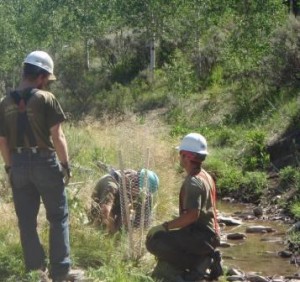
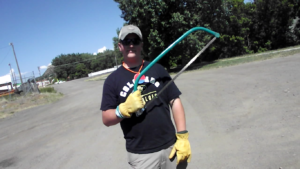 At the
At the 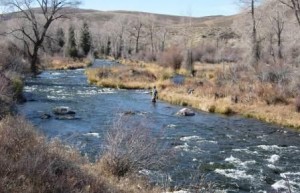
 Over the last decade population studies on the Animas have shown a decline. Although this year there wasn't a turn around, CPW Biologist Jim White told the Durango Herald, "It's been a really nice fish year. It’s definitely been more abundant than years past.”
Over the last decade population studies on the Animas have shown a decline. Although this year there wasn't a turn around, CPW Biologist Jim White told the Durango Herald, "It's been a really nice fish year. It’s definitely been more abundant than years past.” While the Animas is improving, the future of Cutthroat Trout in Hermosa Creek also have a bright future as stream improvements have been made to prepare for Colorado River Cutthroat reintroduction.
While the Animas is improving, the future of Cutthroat Trout in Hermosa Creek also have a bright future as stream improvements have been made to prepare for Colorado River Cutthroat reintroduction.
 There was no fish mortality documented from the spill, while bug sampling by an aquatic biologist with Mountain Studies Institute indicates a still thriving population of mayfly nymphs and caddis pupa. Colorado Parks and Wildlife (CPW) had installed pens of fingerling trout in the Animas before the plume arrived- and none of those fish died either. CPW ran an electro-shocking episode after the “Spill” with the usual re-capture protocol and got essentially the same results as the year before. Actually, the survey showed a slight improvement.
There was no fish mortality documented from the spill, while bug sampling by an aquatic biologist with Mountain Studies Institute indicates a still thriving population of mayfly nymphs and caddis pupa. Colorado Parks and Wildlife (CPW) had installed pens of fingerling trout in the Animas before the plume arrived- and none of those fish died either. CPW ran an electro-shocking episode after the “Spill” with the usual re-capture protocol and got essentially the same results as the year before. Actually, the survey showed a slight improvement.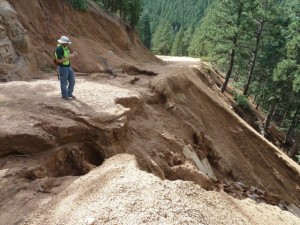 Trout populations can be negatively affected by this excessive sediment, and it can take years for these populations to recover. According to CPW, "The South Platte River in and downstream of the Hayman burn area has only recently begun to return to the quality fishery that it was prior to the fire." The Hayman fire occurred in 2002.
Trout populations can be negatively affected by this excessive sediment, and it can take years for these populations to recover. According to CPW, "The South Platte River in and downstream of the Hayman burn area has only recently begun to return to the quality fishery that it was prior to the fire." The Hayman fire occurred in 2002.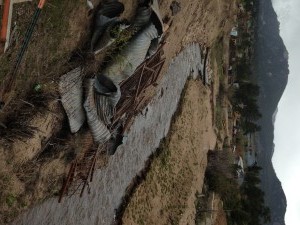
 The mighty river also irrigates more than 1.8 million acres of land- producing about 15 percent of the nation’s crops and about 13 percent of livestock. These totals generate about $1.5 billion a year in agricultural benefits.
The mighty river also irrigates more than 1.8 million acres of land- producing about 15 percent of the nation’s crops and about 13 percent of livestock. These totals generate about $1.5 billion a year in agricultural benefits. Another project in place to keep the Colorado River healthy is the
Another project in place to keep the Colorado River healthy is the  While further on down from the headwaters, Trout Unlimited is teaming up with ranchers and cattlemen to use water
While further on down from the headwaters, Trout Unlimited is teaming up with ranchers and cattlemen to use water 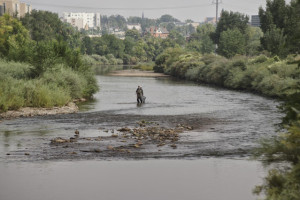 As the Denver Metro area continues to grow, the water needs rise with it and the unreliable flows from the South Platte River aren't enough to supply roughly 80% of the state's population with water throughout the year. Which is why water from the Upper Colorado River headwaters- in this case the Fraser River- are diverted for Front Range usage.
As the Denver Metro area continues to grow, the water needs rise with it and the unreliable flows from the South Platte River aren't enough to supply roughly 80% of the state's population with water throughout the year. Which is why water from the Upper Colorado River headwaters- in this case the Fraser River- are diverted for Front Range usage. Learning by Doing requires regular monitoring of stream temperature, riparian vegetation, and aquatic macro-invertebrates. If an environmental problem is detected, Denver Water will provide some financial support and additional flows to help solve the issue. This includes providing the flushing flows the river needs in the spring to clean sediment build up.
Learning by Doing requires regular monitoring of stream temperature, riparian vegetation, and aquatic macro-invertebrates. If an environmental problem is detected, Denver Water will provide some financial support and additional flows to help solve the issue. This includes providing the flushing flows the river needs in the spring to clean sediment build up.
